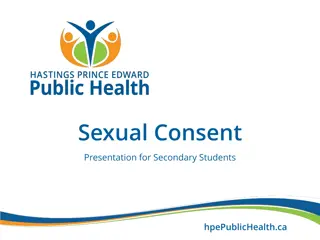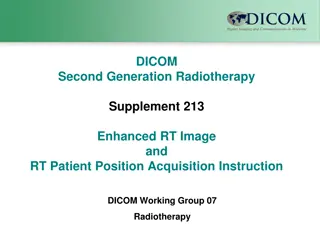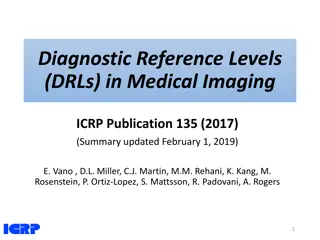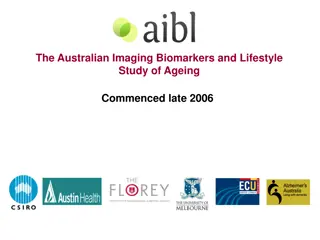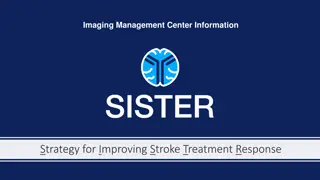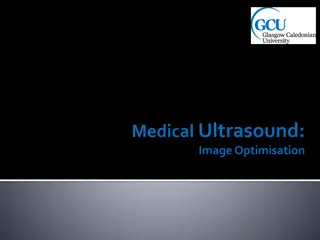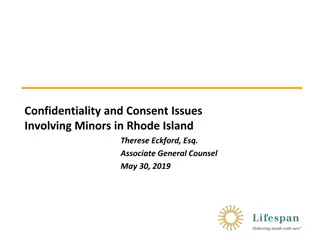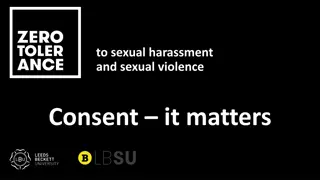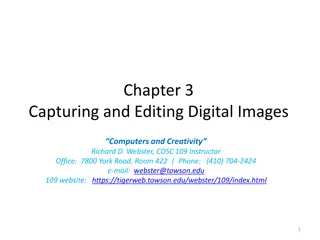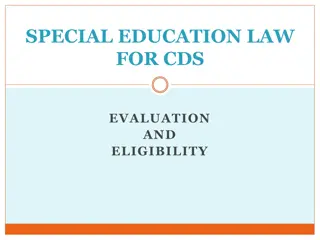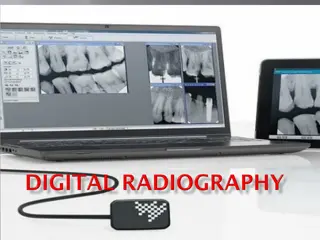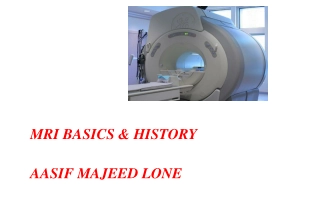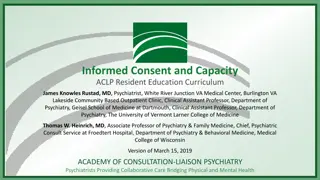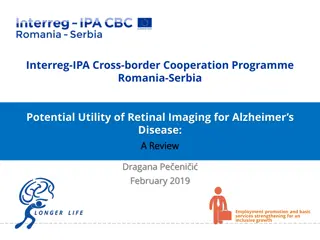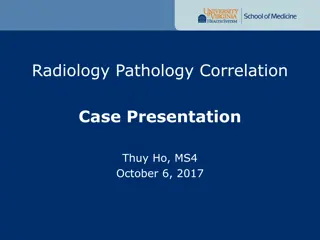Guidelines for Obtaining Consent in Diagnostic Imaging and Radiotherapy
Seeking patient consent is a fundamental ethical and legal requirement in healthcare. This guideline emphasizes the importance of informed consent in imaging and radiotherapy procedures, highlighting the responsibility of healthcare practitioners to prioritize patient needs, values, and autonomy. The development process involved a systematic review of various databases to ensure best practices. The guideline provides 10 recommendations, addressing key themes and specific consent scenarios.
Download Presentation

Please find below an Image/Link to download the presentation.
The content on the website is provided AS IS for your information and personal use only. It may not be sold, licensed, or shared on other websites without obtaining consent from the author. Download presentation by click this link. If you encounter any issues during the download, it is possible that the publisher has removed the file from their server.
E N D
Presentation Transcript
Obtaining consent: a clinical guideline for the diagnostic imaging and radiotherapy workforce
Consent is: the principle that a person must give permission before they receive any type of medical treatment, test or examination . (1)
Introduction Seeking patient consent prior to undertaking an examination or treatment regime is a fundamental ethical and legal requirement of a practitioner. It is also a common courtesy and establishes an appropriate relationship of trust between practitioner and patient; demonstrating the practitioner s respect for the patient s autonomy and involvement in decision making process. Touching a patient without their consent is, without lawful reason, capable of amounting to a charge of battery or trespass to the person . (2)
Introduction The Final Report of the Mid Staffordshire NHS Foundation Trust Public Inquiry (3) recommendations included the principle that the NHS and its staff must prioritise patients needs at all times, be honest, transparent, and candid. Healthcare practitioners must adhere to this by placing the needs and values of patients, carers, and service users at the forefront of service delivery. It is recognised that all members of the diagnostic imaging and radiotherapy workforce are under a great deal of time pressure but it is imperative that they are aware of the issues surrounding the process of gaining consent. The healthcare practitioner carrying out the procedure is ultimately responsible for ensuring that the patient is genuinely consenting to what is being done: it is they who will be held responsible in law if this is challenged later . (4)
Guideline development process What evidence is there to assist radiographers and others to ensure informed consent is obtained from patients during their examination or treatment pathway in imaging and radiotherapy? The review was based on a systematic search, based on an adapted PICO method of, Medline, Pub Med, Cinahl, EBSCO, Science Direct, Web of Science, NICE evidence, OVID, Index to Thesis and ZETOC databases and platforms. The final number of sources selected for inclusion was 28. While the focus of the review was to inform radiography and radiotherapy practice, it is evident that this issue has been addressed by various other healthcare professional bodies and has also been the focus of extensive philosophical, ethical and legal debate.
The 10 recommendations The 10 recommendations reflect the six key themes identified from the literature review, and also includes sections relating to: consent and children; student radiographers and trainee assistant practitioners involvement in consent procedures; consent for screening; use of chaperones and consent. Shared decision- making Capacity Communication of risk and benefit Advocacy Informed Consent Practicalities of the consent process Legal issues
SCoR recommendation 1 Legal issues In order for a patient to give valid informed consent they should be in possession of all the information they require to make a decision, and should be able to do so voluntarily, without pressure. They will need to be aware of the nature and purpose of any treatment/examinations and all relevant benefits and risks that may be important to them. Patients are usually referred to the diagnostic imaging or radiotherapy departments for diagnostic procedures or treatment. The referring clinician may have explained some of the issues, but it is essential that you also obtain and/or confirm consent. The SCoR recognises the time pressures radiographic practitioners are operating under and thereby recommends your department adopts a consent process to ensure a valid informed consent has actually been achieved.
SCoR recommendation 2 Advocacy You need to ensure that you support and encourage a patient s autonomy and rights. Sometimes patients may not have the ability or desire to be assertive at a time when they are potentially vulnerable. In these situations they may need a person to speak on their behalf , thereby acting as an advocate with regard to their care choices or concerns about the service they find themselves accessing. You need to recognise your responsibilities with regard to patient advocacy and ensure you have the knowledge and skills to be able to perform this function.
SCoR recommendation 3 Shared decision-making Consent is not a once-only decision but a process or a journey that happens gradually over time. Nor is it a rigid process; it must be personalised to suit the individual patient. It is also not good practice for a procedure to be described verbally immediately before it is undertaken. If you are using a list of boxes to tick as an aid to facilitate the consent process, you should still ensure that the process is personalised to meet an individual s need.
SCoR recommendation 4 Capacity Every adult has the right to make their own decisions and must be assumed to have capacity to do so, unless it is proven otherwise. Individuals have the right to be supported to make their own decisions and must be aided to do so. Consent principles must apply to all patients and where a patient has a diagnosis that may affect their capacity to consent, you must not be automatically assumed that the patient is unable to make any decision for themselves. Any decisions made on behalf of people without capacity must be in their best interests and done in the least restrictive manner possible. It is important that you keep up to date and comply with the codes of practice that apply to your work place.
SCoR recommendation 5 Communication of risk and benefit It is incumbent on you to find out an individual patient s priorities and concerns in order to tailor the information accordingly. You should inform the patient of the benefits, side effects and possible risks of the procedure, and the risks of not having it, whilst ensuring they understand that they may change their minds at any time an withdraw their consent if they do not wish to continue. Information should be given to the patient at a reasonable time before the procedure. This allows the patient to take time to read the information, and then be given the opportunity to ask questions. You should not be judgemental about a competent patient s decision to refuse an examination at any stage and you must respect a patient s own lifestyle priorities and choices. You will also need to explain the risks that may arise as well as the benefits of undergoing imaging and treatments when using ionising and non-ionising radiation. The 2013 BSS EU Directive (5)(to become UK law by Feb 2018) states that patient information must also include radiation doses for that specific examination. Therefore, as from 2018, you will also be required to give an explanation to a patient about the radiation dose they will receive.
SCoR recommendation 6 Practicalities of the consent process Consent can take a variety of forms: verbal, implied and written. The processes and practicalities involved can vary and consent can be withdrawn at any time during the procedure. Technological changes in clinical practice are influencing the practicalities, with a necessity that processes evolve so they are fit for purpose in an increasingly paperless working environment. In the case of written or verbal consent having been obtained, records must be kept. Any refusal or withdrawal of consent by a patient must be discussed in terms of the implications of this decision. There must be records of the details of the consent process, including the fact that discussion about any possible implications was undertaken including the date and timings. You must check your employing authority s policy with regard to obtaining written consent for intimate and invasive examinations and procedures. You may be responsible for obtaining written informed consent for specified examinations and/or treatments. These responsibilities will be detailed in your individual scope of practice, as defined in your job description.
SCoR recommendation 7 Consent and children If a child is competent to give consent for themselves, for either an examination or treatment, you should seek consent directly from them. In the event of a parent/carer or competent child subsequently refusing consent to the examination/treatment once in the clinical department, you will need to liaise with the requesting physician.
SCoR recommendation 8 Student radiographers and trainee assistant practitioners involvement in consent procedures Where a student may be present during an intimate procedure (e.g transrectal/transvaginal ultrasound, mammography, prostate brachytherapy) maintaining the balance between the educational needs of the student and the ethical requirement of respect for the individual person is crucial. You should obtain patients explicit verbal consent for a student(s) to be present and the student should also obtain consent themselves. Patients must be made aware of which students and how many students will be present prior to being asked to give explicit verbal consent. In all situations where consent is sought from a patient for a student to perform a procedure or to be present during an examination or procedure that may be considered to be intimate, you must ensure that a patient can decline without fear of offence.
SCoR recommendation 9 Consent for screening Individuals must be provided with full accurate information on which to make an informed choice of whether to participate or not in asymptomatic screening. This information should be based on the best available current evidence and include what they want to know as well as what they need to know. Information should include the purpose of screening, the uncertainties, and any associated risks. By attending a screening session, it might be assumed that the individual has made an informed choice rather than merely complying with an invitation to participate. You must gain explicit verbal consent after assessing the individual s understanding of the procedure and be prepared to provide further information as well as answering questions. If the individual requires detailed information then it might be prudent to consider re-booking the appointment to allow time to consider the new information before consenting.
SCoR recommendation 10 Use of chaperones and consent You might find it useful to consider the issue of chaperoning together with consent and it is advisable to ensure that the patient agrees with, and understands the role of, staff that might be present during examinations that are intimate or may be deemed to be so by the patient. Your Trust, Health Board and other employer will have their own intimate examination and chaperone policies to which you should refer.
Remember Does the patient know about the material risks of the treatment I am proposing? What sort of risks would a reasonable person in the patient s circumstances want to know? What sorts of risks would this particular patient want to know? Does the patient know about reasonable alternatives to this treatment? Have I taken reasonable care to ensure that the patient actually knows all this? Do any of the exceptions to my duty to disclose apply here? Have I properly documented my consent process? as proposed by Sokol (6)
Conclusion Step Task Comments 1 Explain the procedure or treatment to the patient. Ensure that the information is given in a format that the patient can understand, appropriate to the patient s needs to ensure parity of care for all. This includes meeting the needs of individuals with physical difficulties and learning difficulties, and adequate provision of information in languages other than English. 2 Explain the risks/benefits for the procedure or treatment along with any alternative options (if applicable). Explain the risks and benefits (including the radiation risk) of the various procedures or treatments. 3 Explain the consent and decision making process so the patient understands what is expected of them. Ensure that the patient is supported during the decision making process. Make sure that they have access to an advocate if required. 4 Allow time for the patient to deliberate before being asked to consent to a procedure or treatment. This can be difficult in a busy department but the patient should be afforded sufficient time for their deliberations. 5 Discuss the patient s wishes, needs, views and expectations regarding any procedure or treatment. It is important not to make assumptions about what is the best outcome for a patient. They should be supported to come to the decision that is the best for them. 6 Provide any relevant information not already covered, or any emerging information. This can help to clarify and again supports informed decision-making. 7 Has the patient understood? The person taking the consent should be satisfied that the patient has understood the information provided. 8 Respect the patient s decision. You must always respect the decision made by an adult patient with capacity. 9 Make sure the consent is documented. (The nature of the documentation may alter subject to the nature of the procedure /treatment). In some instances a signed form should be retained in the patient s notes. Adapted from The Royal College of Surgeons (7)
References 1. 2. 3. 4. NHS Choices. Consent to treatment. 2016. Available: http://www.nhs.uk/Conditions/Consent-to-treatment/Pages/Introduction.aspx Lord Goff in Re F (Mental Patient: Sterilisation): HL 4 May 1989 2 AC 1 (p 73). UK Government. (Chair Robert Francis QC) The Final Report of the Mid Staffordshire NHS Foundation Trust Public Inquiry. London: TSO; 2013. Available: http://webarchive.nationalarchives.gov.uk/20150423112024/http://www.midstaffspu blicinquiry.com/report Council of European Union. BSS EU Directive 2013. Official Journal of the European Union. 2014. Available: http://eur- lex.europa.eu/LexUriServ/LexUriServ.do?uri=OJ:L:2014:013:0001:0073:EN:PDF Sokol DK. Update on the UK law on consent. BMJ 2015; 350:h1481. Royal College of Surgeons. Consent: Supported Decision-Making: A guide to good practice. London: RCS; 2016. Available: https://www.rcseng.ac.uk/library-and- publications/college-publications/docs/consent-good-practice-guide/ 5. 6. 7.


